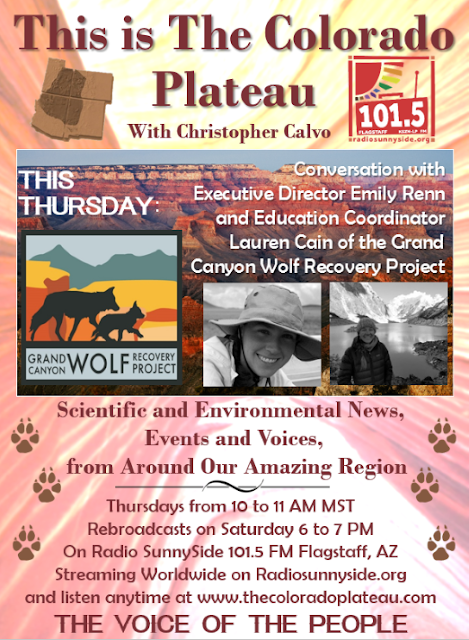 |
| A still from the film 'Too Precious to Mine' |
If you missed this weeks episode of This is the Colorado Plateau you can listen
here, we focused on the people of the Grand Canyon, Colorado and Little Colorado Rivers and their deep connections to these amazing places. Also we interviewed photographer Amy Martin and Filmmaker Justin Clifton about the legacy and continuing threat of Uranium contamination on the Plateau and especially on the Diné (Navajo) Nation, as well as their films, art and an art show at Firecreek Coffee Company in Flagstaff called Uranium: Ignominious Legacy on the Colorado Plateau. We also had Plateau reporter Ashley Doyle on with a new segment called Plateau Food Ecology where she discusses the traditional foods of the Hualapai tribe, as well as music by Ed Kabotie from the edge of Grand Falls at the Little Colorado River.
just like to hear it one more time you can listen to it
And please check out the films we discussed:
Too Precious to Mine and
Half Life: The Story of Americas Last Uranium Mill
And, as always, we would truly appreciate it if you Plateau lovers out there would consider submitting an Audio Postcard from the Plateau. It could be about anything you'd like as long as its Colorado Plateau related...for instance you could speak about a rare bird you saw, or a really great hike you did, or just what the Colorado Plateau means to you...anything goes! So grab your phone or other recording device and send us your amazing words. You can send the mp3 file to thecoloradoplateau@gmail.com and listen for your voice on the air!







